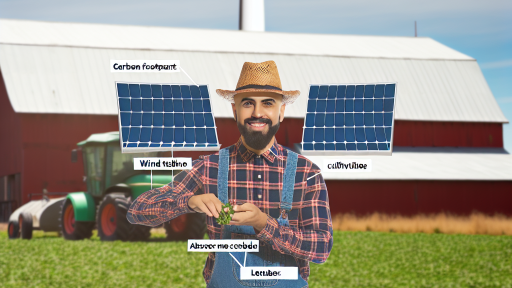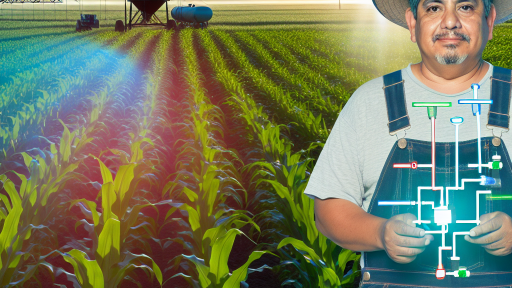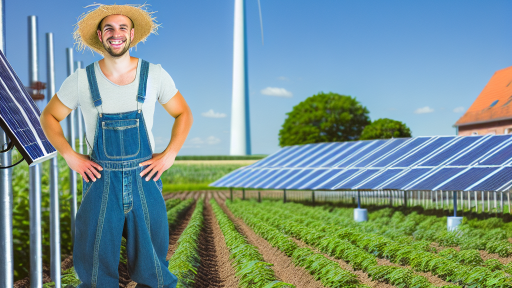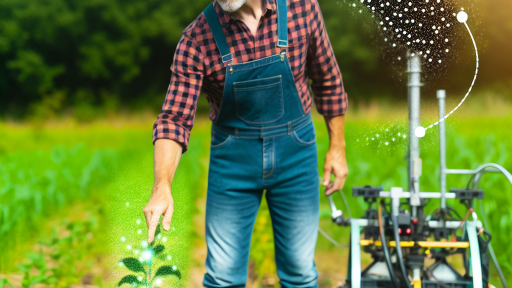Overview of Mulching
Definition of Mulching
Mulching is the practice of covering soil with materials.
These materials help retain soil moisture and regulate temperature.
Additionally, mulching suppresses weed growth.
Importance of Mulching
Mulching is crucial for maintaining soil health.
It protects soil from erosion caused by wind and water.
Moreover, it enhances soil fertility over time.
Benefits of Mulching
- Mulching reduces soil temperature fluctuations.
- It improves water retention in dry periods.
- Organic mulches contribute to nutrient cycling.
- Mulching discourages pest infestations.
Types of Mulch
There are various types of mulch available.
Organic mulches include straw, wood chips, and grass clippings.
Inorganic options feature stones, plastic, and fabric.
Best Practices for Mulching
Proper application of mulch is essential for effectiveness.
Use a depth of two to four inches for best results.
Ensure that the mulch does not touch plant stems to prevent rot.
Finally, refresh mulch annually to maintain its benefits.
Types of Mulching Materials
Organic Mulching Materials
Organic mulching materials are derived from natural sources.
They include straw, grass clippings, wood chips, and leaves.
Transform Your Agribusiness
Unlock your farm's potential with expert advice tailored to your needs. Get actionable steps that drive real results.
Get StartedThese materials decompose over time, enriching the soil.
They improve soil structure and provide nutrients to plants.
Moreover, organic mulches help retain moisture effectively.
As they break down, they encourage beneficial microbial activity.
Examples of popular organic mulches are pine needles and shredded bark.
Inorganic Mulching Materials
Inorganic mulching materials offer a different set of benefits.
They are typically made from synthetic substances like plastic and rubber.
Plastic mulch is widely used for its moisture-retaining properties.
It helps to suppress weeds by blocking sunlight.
Rubber mulch, on the other hand, is long-lasting and durable.
This type of mulch does not decompose, requiring less frequent replacement.
However, inorganic mulches do not improve soil fertility.
They can cause heat buildup, which may harm certain plants.
Comparison of Organic and Inorganic Mulches
Choosing between organic and inorganic mulches depends on your needs.
Organic mulches enhance soil health while providing moisture retention.
In contrast, inorganic mulches offer durability and weed suppression.
Consider your garden’s specific requirements before selecting a mulch type.
Each type serves unique purposes, so choose wisely.
Analyzing Soil Moisture Retention
Importance of Soil Moisture
Soyl moisture is essential for plant growth and health.
It directly affects plant availability to absorb nutrients.
Consequently, maintaining adequate moisture can enhance crop yields.
Moreover, it helps regulate soil temperature.
What is Mulching?
Mulching involves applying a layer of material over the soil surface.
This technique offers multiple benefits for soil management.
Showcase Your Farming Business
Publish your professional farming services profile on our blog for a one-time fee of $200 and reach a dedicated audience of farmers and agribusiness owners.
Publish Your ProfileVarious materials can be used for mulching, such as grass clippings or wood chips.
Benefits of Mulching Techniques
Mulching provides several advantages for soil moisture retention.
Firstly, it reduces evaporation from the soil surface.
This results in lower water loss during hot weather.
Secondly, mulch acts as a barrier against soil erosion.
This preservation prevents nutrient loss from the soil.
Additionally, mulches can suppress weed growth effectively.
This allows for better nutrient absorption by crops.
Types of Mulch Materials
Different types of mulch can enhance soil moisture retention.
- Organic mulch includes straw, wood chips, or leaves.
- Inorganic mulch can consist of gravel or landscape fabric.
Choosing the right mulch depends on various factors.
These include climate, budget, and intended crop type.
Implementing Advanced Mulching Techniques
Advanced mulching techniques can further enhance moisture retention.
Consider using thicker layers of organic material for better coverage.
For instance, applying two to four inches of mulch can be effective.
Mixing different mulch types may also increase efficiency.
Regularly replenishing mulch helps maintain its effectiveness.
Monitoring Soil Moisture Levels
It is crucial to monitor soil moisture levels continuously.
Utilize moisture sensors or probes for accurate data collection.
Evaluating moisture levels can guide irrigation practices.
This ultimately leads to better water resource management.
Benefits of Effective Mulching
Advanced mulching techniques greatly improve soil moisture retention.
They contribute to healthier plants and increased agricultural productivity.
Emphasizing effective mulching is a step towards sustainable farming.
You Might Also Like: Implementing Cover Crops to Enhance Water Retention
Creating a Layered Mulch System
Understanding the Benefits of Layered Mulch
A layered mulch system provides multiple benefits for soil moisture retention.
It helps regulate soil temperature, promoting healthy root growth.
Additionally, it suppresses weed growth, reducing competition for resources.
Choosing the Right Materials
Selecting appropriate mulch materials is crucial for effectiveness.
Organic options include wood chips, straw, and grass clippings.
Each material has unique properties that improve soil structure and fertility.
Layering Techniques to Enhance Efficiency
Start with a coarse layer at the bottom for drainage and aeration.
Place finer materials on top to improve moisture retention.
Consider incorporating green materials, like fresh grass, for nitrogen release.
Application Thickness and Coverage
The right thickness of mulch is essential for effectiveness.
Apply at least three inches to suppress weeds effectively.
Keep it away from plant stems to prevent rot and pest attraction.
Maintenance of the Mulch Layer
Regular maintenance ensures the longevity of your mulch system.
Check for settling and replenish layers as necessary.
Rotate materials to promote decomposition and nutrient release.
Monitoring Soil Moisture Levels
It’s vital to periodically check soil moisture beneath the mulch.
Showcase Your Farming Business
Publish your professional farming services profile on our blog for a one-time fee of $200 and reach a dedicated audience of farmers and agribusiness owners.
Publish Your ProfileUse a moisture meter or simply dig down to assess moisture content.
Adjust watering schedules based on your findings to promote health.
Uncover the Details: Benefits of Renewable Energy for Modern Farmers
Using Cover Crops in Conjunction with Mulching for Moisture Preservation
Introduction to Cover Crops
Cover crops play a vital role in sustainable agriculture.
They improve soil health and structure effectively.
Moreover, cover crops enhance moisture retention.
Benefits of Using Cover Crops
Cover crops help prevent soil erosion during storms.
They increase organic matter in the soil gradually.
Additionally, cover crops suppress weeds naturally.
This helps conserve moisture levels in the soil.
Types of Cover Crops
Legumes, such as clover, boost nitrogen availability.
Grasses like rye can provide excellent ground cover.
Mustard crops can suppress pests while improving soil health.
Choosing the right type depends on your soil and climate.
Integrating Mulching with Cover Crops
Mulching works synergistically with cover crops.
It adds a protective layer over the soil surface.
This reduces evaporation rates significantly.
Consequently, soil moisture remains intact for longer periods.
Best Practices for Implementation
First, select appropriate cover crops for your region.
Next, plant the cover crops during the off-season.
Then, apply mulch after cover crops reach maturity.
Regularly monitor moisture levels for optimal results.
Enhancing Soil Resilience with Cover Crops
Utilizing both techniques enhances overall soil health.
Together, they create a resilient farming ecosystem.
Furthermore, these methods support sustainable agricultural practices.
They safeguard against drought and climate variability effectively.
Discover More: Climate Risks And Crop Yield Declines
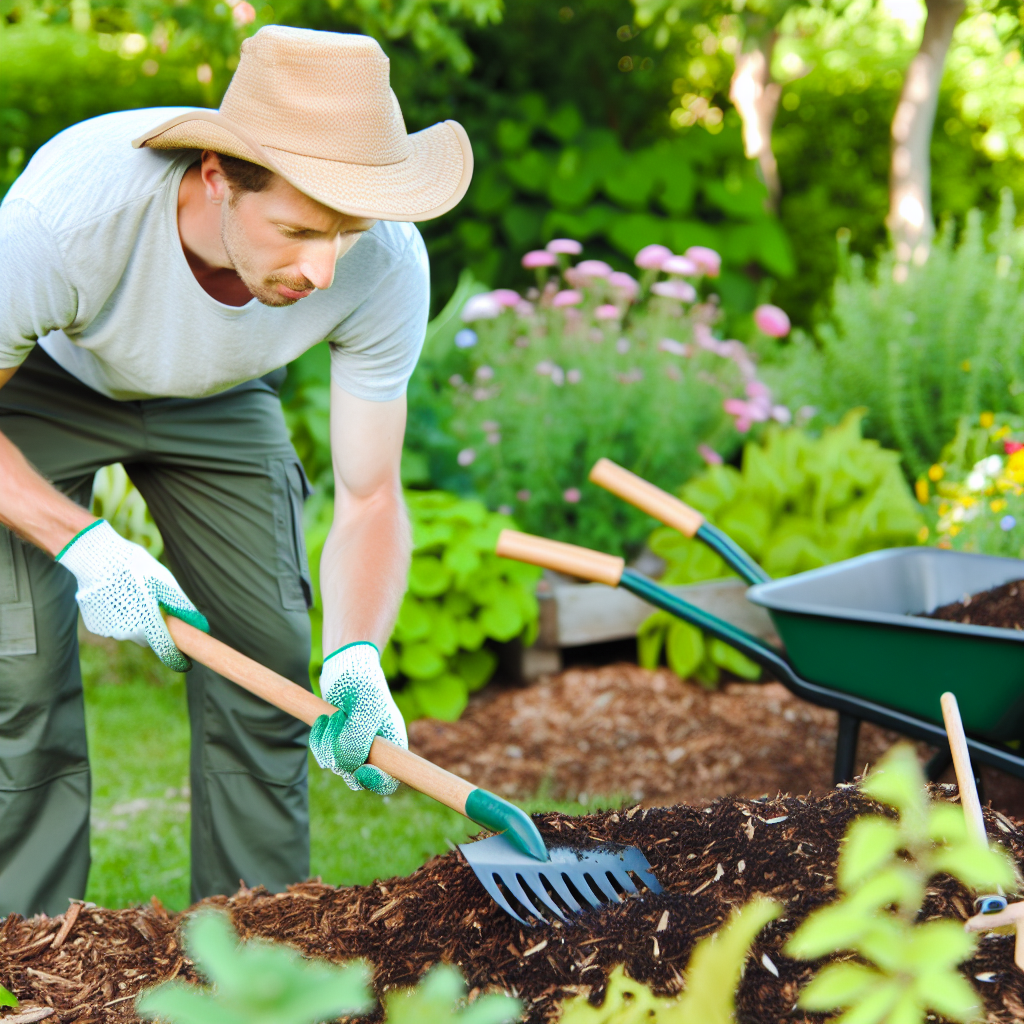
Innovative Mulching Techniques: Biodegradable Mulch Films
Introduction to Biodegradable Mulch Films
Biodegradable mulch films provide an eco-friendly alternative to plastic mulches.
They break down naturally, reducing plastic waste in agriculture.
Farmers can use them to maintain soil moisture effectively.
Benefits of Using Biodegradable Mulch Films
These films enhance soil health by improving moisture retention.
Additionally, they promote beneficial microbial activity in the soil.
Farmers can also reduce labor costs associated with film disposal.
Overall, these films support sustainable farming practices.
Types of Biodegradable Mulch Films
Several types of biodegradable films are available to farmers.
Starch-based films are commonly used due to their ease of decomposition.
Other options include films made from cellulose and polylactic acid.
Each type offers unique advantages for specific crops and conditions.
Application Techniques for Maximum Effectiveness
Proper application increases the performance of biodegradable mulch films.
Farmers should prepare the soil adequately before installation.
Showcase Your Farming Business
Publish your professional farming services profile on our blog for a one-time fee of $200 and reach a dedicated audience of farmers and agribusiness owners.
Publish Your ProfileAvoid applying the films during extreme weather to ensure adhesion.
Moreover, regular monitoring of moisture levels helps optimize results.
Challenges in Adoption
Despite advantages, some farmers hesitate to adopt biodegradable options.
The initial cost can be higher compared to traditional plastic films.
Some types may require specific conditions to decompose effectively.
Education and support from agricultural extension services can help.
Future Trends in Biodegradable Mulch Technology
Research continues to enhance the effectiveness of biodegradable films.
Developments aim to improve durability while ensuring rapid decomposition.
As technology evolves, more farmers may adopt these innovative solutions.
Ultimately, the agricultural industry may see a shift toward sustainability.
Find Out More: Cover Crops and Their Role in Gas Mitigation
The Role of Mulching in Soil Temperature Regulation
Understanding Soil Temperature Dynamics
Soyl temperature influences seed germination and root establishment.
It affects microbial activity and nutrient availability as well.
Optimal soil temperature promotes healthy plant growth.
Conversely, extreme temperatures can hinder crop development.
Insulation Effects of Mulch
Mulch acts as an insulator for the soil.
During hot weather, it helps maintain cooler soil temperatures.
This protection reduces stress on plants during the heat of summer.
In colder months, mulch retains warmth, benefiting plant roots.
Additionally, it minimizes temperature fluctuations in the soil.
Types of Mulch for Temperature Control
Different types of mulch offer varying levels of insulation.
Organic mulches, such as wood chips and straw, improve soil structure.
They decompose over time, enriching the soil.
Conversely, synthetic mulches provide durable and consistent temperature control.
Choosing the right mulch depends on specific garden needs.
Application Techniques for Effective Mulching
Applying mulch at the right depth enhances its effectiveness.
A thickness of two to four inches is often recommended.
Ensure the mulch is spread evenly around plants.
Avoid piling mulch directly against plant stems.
This practice can prevent moisture accumulation and rot.
Monitoring and Maintenance
Regularly check mulch for degradation and replenishment needs.
Organic mulches will need to be refreshed more frequently.
During dry spells, ensure that the mulch retains its moisture-retaining properties.
Adjust the type or amount of mulch based on seasonal changes.
Proper maintenance ensures continued benefits for soil temperature regulation.
Case Studies: Successful Implementation of Advanced Mulching Techniques
Citrus Grove Case Study
A citrus farm in California adopted advanced mulching techniques to enhance soil moisture retention.
They implemented wood chips as mulch around their citrus trees.
This choice significantly reduced evaporation rates from the soil.
Moreover, the organic mulch contributed essential nutrients as it decomposed.
As a result, the farm observed improved tree health and increased fruit yield.
Showcase Your Farming Business
Publish your professional farming services profile on our blog for a one-time fee of $200 and reach a dedicated audience of farmers and agribusiness owners.
Publish Your ProfileVegetable Garden Initiative
A local community garden in Oregon introduced straw mulching to combat soil dryness.
Gardeners spread a thick layer of straw around vegetable plants.
This practice maintained an optimal moisture level during hot summer months.
Additionally, it suppressed the growth of harmful weeds.
Overall, the garden experienced a boost in vegetable production and quality.
Organic Farm Experiment
In Vermont, an organic farm experimented with cardboard as mulch in their fields.
The farm layered cardboard sheets under straw, creating a unique mulch combination.
This method significantly improved soil moisture retention and mitigated erosion.
Furthermore, this approach attracted beneficial organisms to the soil.
Consequently, the farm reported healthier crops and reduced watering needs.
Research Findings
Recent studies highlight the effectiveness of mulch in various agricultural settings.
Research consistently finds that proper mulching leads to lower irrigation costs.
This practice helps conserve water resources in arid regions.
Moreover, using organic materials improves soil structure and fertility over time.
These findings underscore the importance of advanced mulching techniques in agriculture.
Additional Resources
Enhancing crop yield and conserving soil moisture … – Frontiers
Water Conservation in Agriculture – Common Methods | Verdesian

